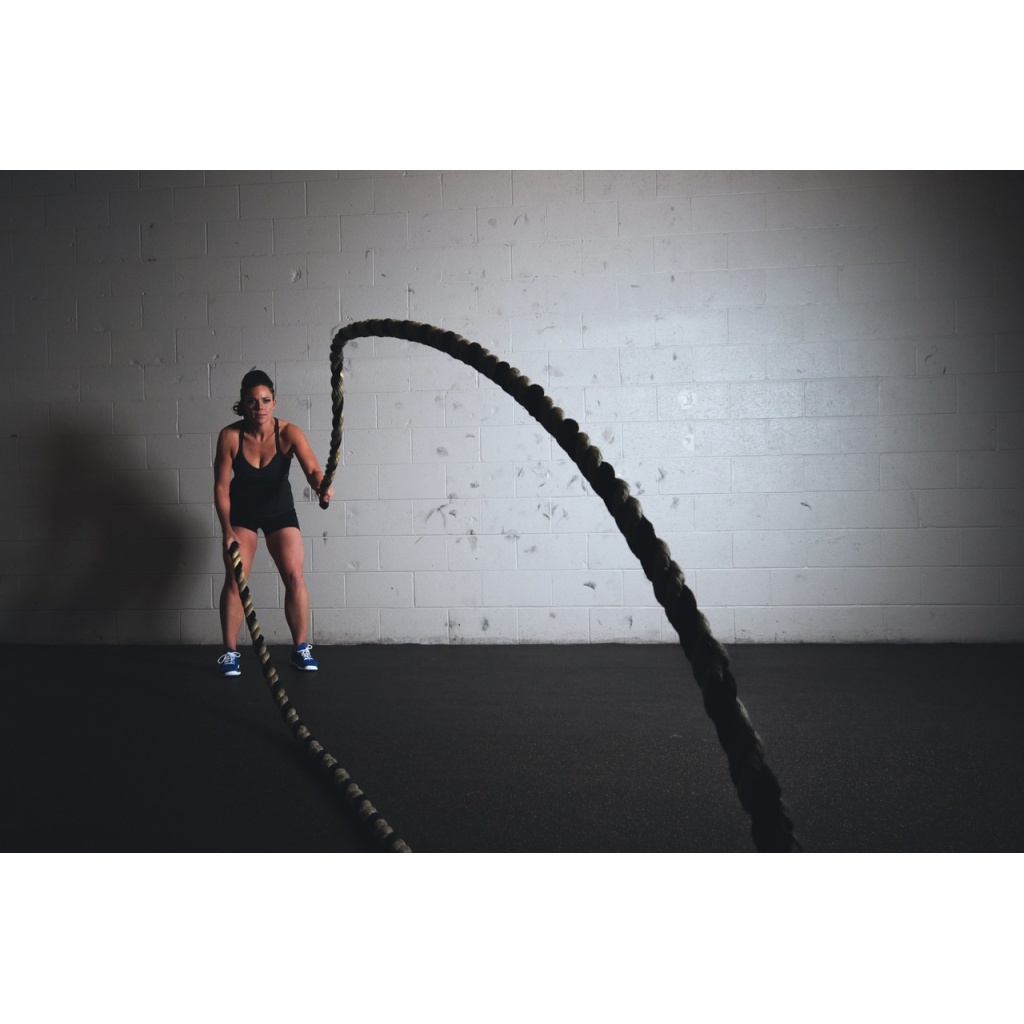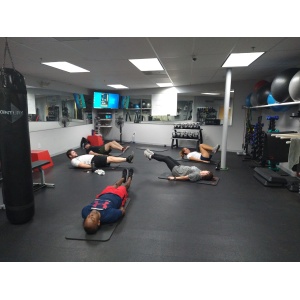7 Benefits of High Intensity Interval Training (HIIT)
While most people know that physical activity is healthy, it’s estimated that about 20% of people worldwide don’t get enough of it each day (1Trusted Source).
In fact, in the United States alone, that number is more like 80% (2Trusted Source).
Unless you have a physically demanding job, a dedicated fitness routine is likely your best bet for getting active.
However, many people feel that they don’t have enough time to exercise (3Trusted Source).
If this sounds like you, maybe it’s time to try high intensity interval training (HIIT).
“HIIT” is a broad term for workouts that involve short periods of intense exercise alternated with recovery periods.
One of the biggest advantages of HIIT is that you can get maximal health benefits in minimal time.
This article explains what HIIT is and examines 7 of its top health benefits.
What is high intensity interval training?
HIIT involves short bursts of intense exercise alternated with low intensity recovery periods. Interestingly, it is perhaps the most time-efficient way to exercise (4Trusted Source, 5Trusted Source).
Typically, a HIIT workout will be 10–30 minutes in duration.
Despite how short the workout is, it can produce health benefits similar to twice as much moderate-intensity exercise (6Trusted Source, 7Trusted Source).
The actual activity being performed varies but can include sprinting, biking, jumping rope, or other bodyweight exercises.
For example, a HIIT workout using a stationary bike could consist of 30 seconds of cycling as fast as possible with high resistance, followed by several minutes of slow, easy cycling with low resistance.
This would be considered one “round” or “repetition” of HIIT, and you would typically complete 4–6 reps in one workout.
The specific amount of time you exercise and recover will vary based on the activity you choose and how intensely you are exercising.
Regardless of how you implement this strategy, high intensity intervals should involve short periods of vigorous exercise that make your heart rate speed up.
HIIT not only provides the benefits of longer-duration exercise in a much shorter amount of time but also may provide some unique health benefits.
HIIT benefits
1. HIIT can burn a lot of calories in a short amount of time
You can burn calories quickly using HIIT (8Trusted Source, 9Trusted Source).
One study compared the calories burned during 30 minutes each of HIIT, weight training, running, and biking.
The researchers found that HIIT burned 25–30% more calories than the other forms of exercise (8Trusted Source).
In this study, a HIIT repetition consisted of 20 seconds of maximal effort followed by 40 seconds of rest.
This means the participants were actually exercising for only one-third of the time that the running and biking groups were.
Although each workout session was 30 minutes long in this study, it is common for HIIT workouts to be much shorter than traditional exercise sessions.
This is because HIIT allows you to burn about the same number of calories but spend less time exercising.
SUMMARY
HIIT may help you burn more calories than traditional exercise or burn the same number of calories in a shorter amount of time.
2. Your metabolic rate is higher for hours after HIIT exercise
One of the ways HIIT helps you burn calories actually comes after you’re done exercising.
Several studies have demonstrated HIIT’s impressive ability to increase your metabolic rate for hours after exercise (10Trusted Source, 11Trusted Source, 12Trusted Source).
Some researchers have even found that HIIT increases your metabolism after exercise more so than jogging or weight training (10Trusted Source).
The same study also found that HIIT could shift the body’s metabolism toward using fat for energy rather than carbs.
SUMMARY
Due to the intensity of the workout, HIIT can elevate your metabolism for hours after exercise. This results in burning additional calories even after you have finished exercising.
3. HIIT can help you lose fat
Studies have shown that HIIT can help you lose fat.
One review looked at 13 experiments and 424 adults with overweight or obesity.
Interestingly, it found that both HIIT and traditional moderate-intensity exercise can reduce body fat and waist circumference (13Trusted Source).
A range of other studies also indicate that HIIT can reduce body fat despite the relatively short time commitment (14Trusted Source, 15Trusted Source, 16Trusted Source).
However, like other forms of exercise, HIIT may be most effective for fat loss in people with overweight or obesity (17, 18Trusted Source).
SUMMARY
High intensity intervals can produce similar fat loss to traditional endurance exercise, even with a much smaller time commitment. They can also reduce waist circumference.
4. You might gain muscle using HIIT
In addition to helping with fat loss, HIIT could help increase muscle mass in certain people (18Trusted Source, 19Trusted Source, 20Trusted Source).
However, the gain in muscle mass is primarily in the muscles being used the most, often those in the trunk and legs (18Trusted Source).
Additionally, increases in muscle mass are more likely to occur in people who were less active to begin with (21Trusted Source).
Some research in active people has failed to show higher muscle mass after HIIT programs (22Trusted Source).
Weight training continues to be the gold standard form of exercise to increase muscle mass, but high intensity intervals could support a small amount of muscle growth (21Trusted Source).
SUMMARY
If you are not very active, you may gain some muscle by starting HIIT, but not as much as you would if you engaged in weight training.
5. HIIT can improve oxygen consumption
Oxygen consumption is your muscles’ ability to use oxygen. Endurance training is typically used to improve your oxygen consumption.
Traditionally, this consists of long sessions of continuous running or cycling at a steady rate.
However, it appears that HIIT can produce the same benefits in a shorter amount of time (17, 18Trusted Source, 23Trusted Source).
One study found that participants who performed 20-minute HIIT workouts 4 days per week for 5 weeks improved their oxygen consumption by 9% (6Trusted Source).
This was almost identical to the improvement in oxygen consumption in the other group in the study, who cycled continuously for 40 minutes per day, 4 days per week.
Another study found that 8 weeks of exercising on the stationary bike using traditional exercise or HIIT increased oxygen consumption by about 25% (7Trusted Source).
Once again, the total time spent exercising was much different between groups: 120 minutes per week of traditional exercise versus only 60 minutes per week of HIIT.
Additional studies also demonstrate that HIIT can improve oxygen consumption (22Trusted Source, 24Trusted Source).
SUMMARY
High intensity interval training can improve oxygen consumption as much as traditional endurance training, even if you exercise only about half as long.
6. HIIT can reduce heart rate and blood pressure
HIIT may have important health benefits as well.
A large amount of research indicates that it can reduce heart rate and blood pressure in people with overweight and obesity, populations in which high blood pressure is common (17).
One study found that 8 weeks of HIIT on a stationary bike decreased blood pressure as much as traditional, continuous endurance training in adults with high blood pressure (7Trusted Source).
In this study, the endurance training group exercised 4 days per week for 30 minutes per day, and the HIIT group exercised only 3 times per week for 20 minutes per day.
Some researchers have found that HIIT may even reduce blood pressure more than the frequently recommended moderate-intensity exercise (25Trusted Source).
However, it appears that high intensity exercise does not typically change blood pressure in people in the “normal” BMI range who have normal blood pressure (17).
SUMMARY
HIIT can reduce blood pressure and heart rate, primarily in people with overweight or obesity who also have high blood pressure.
7. HIIT can reduce blood sugar
HIIT programs lasting less than 12 weeks can reduce blood sugar (17, 26Trusted Source).
A summary of 50 studies found that HIIT not only reduces blood sugar but also improves insulin resistance more than traditional continuous exercise (27Trusted Source).
Based on this information, it is possible that high intensity exercise is particularly beneficial for those at risk for type 2 diabetes.
In fact, some experiments specifically in people with type 2 diabetes have demonstrated the effectiveness of HIIT for improving blood sugar (28Trusted Source).
However, research in healthy people indicates that HIIT may be able to improve insulin resistance even more than traditional continuous exercise (23Trusted Source).
SUMMARY
High intensity interval training may be especially beneficial for those needing to reduce blood sugar and insulin resistance. Research has found these improvements in people with and without diabetes.
8. HIIT improves aerobic and anaerobic performance
While its health benefits are very important, HIIT also improves performance in both anaerobic and aerobic activities (29Trusted Source).
Whether you’re an athlete or a weekend warrior or you just enjoy running around with your kids, HIIT training will improve your performance during these tasks with just a few short sessions per week.
- Personal Training
12 Week Customized Personal Training Program


